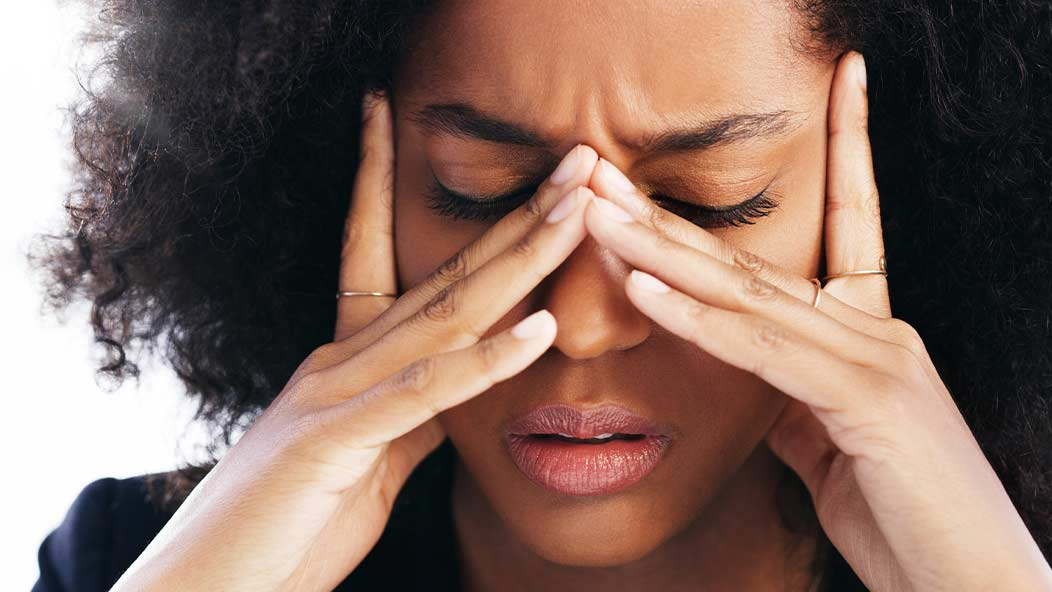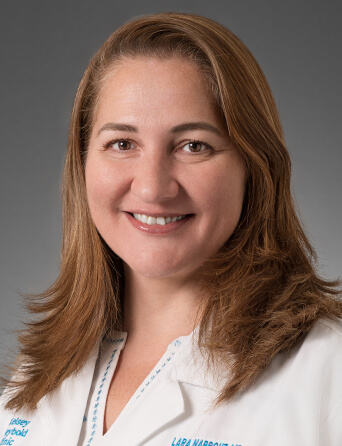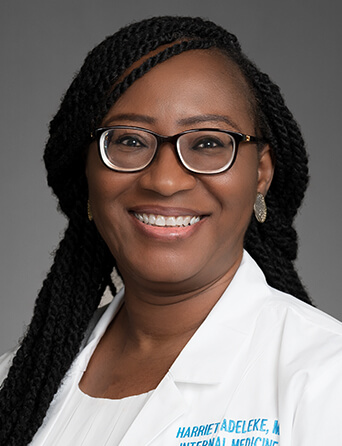Join Our eNewsletter!
Subscribe to our monthly newsletter to receive encouraging advice to help you lead a healthy lifestyle.

Chronic Migraine: Not Just Another Headache
We all get headaches. Many of us have also experienced a migraine attack now and then, known in the medical community as episodic migraine. But for nearly 40 million Americans with chronic migraine, a headache can mean debilitating pain and other symptoms that can make daily activities challenging or even impossible. This is significant since migraine attacks can last hours or even days, making it difficult to determine when one headache ends and the next one begins
Chronic migraine, defined as experiencing more than 15 migraine headaches per month for more than three months, is the world's second-highest cause of disability. It's also more common in women than in men, with 1 in 5 women and 1 in 15 men suffering with the disorder.
Migraine Causes
As prevalent as chronic migraine is, the exact cause of this complex neurological condition is still unknown. Current theories suggest it may be caused by one or more of these factors:
- Genetics - Having a close biological relative, especially a parent or grandparent, with chronic migraine
- Blood flow - Narrowing or widening of blood vessels in the brain
- Brain chemistry changes - Shifts in levels of neurotransmitters (chemical messengers) and serotonin (a chemical that carries messages between the brain's nerve cells)
- Incorrect signaling - Nerve clusters around the eyes or elsewhere on the head sending inaccurate messages to the brain
- Inaccurate pain processing - The pain processing centers of the brain malfunctioning
- Hormonal changes - Migraine experienced by women at the start of their menstrual period, during ovulation, or at the beginning of menopause
- Abnormal activity of the trigeminal nerve - Sensitization of the cranial nerve responsible for sensation in and functions of the face

Migraine Stage
Migraine looks different for each individual, but attacks often occur in up to four stages that can exhibit specific symptoms or signs. Not every stage happens during every attack, and some people may never experience some of the stages.
Prodrome
Many people suspect a migraine attack is imminent because they notice the following signs hours or days prior:
- Difficulty concentrating
- Irritability or depression
- Problems reading and speaking
- Trouble sleeping or frequent yawning
- Unusual food cravings
- Muscle stiffness
- Increased urination
- Sensitivity to light and sound
- Nausea
- Fatigue
Aura
For several minutes up to an hour before an attack, some people (but not most) experience an aura, which can involve:
- Seeing bright flashing dots
- Blind spots or temporary vision loss
- Seeing wavy or jagged lines
- Numbness or tingling in the skin
- Ringing in the ears
- Changes in smell or taste
- Changes in speech patterns
Headache
This stage is common to all migraine sufferers, but the extent of pain as well as the sensation can differ from person to person and from headache to headache. The duration of the pain is typically from four to 72 hours, and the pain is usually described as a drilling, poking, or throbbing feeling that starts on one side of the head and spreads to the other side. A person may also experience the following during this stage:
- Sensitivity to light, noise, and smells
- Nausea and vomiting or upset stomach
- Temperature fluctuations (sweating or chills)
- Dizziness or blurred vision
- Loss of appetite
- Changes in speech patterns
- Looking pale
- Tiredness
- Tender scalp
Postdrome
Also referred to as a "migraine hangover", this stage typically lasts a day or two after an attack and may cause the following:
- Difficulty concentrating or understanding
- Feeling down or depressed
- Feeling fatigued
- Feeling euphoric
Treating Chronic Migraine
Because the exact cause of chronic migraine is unknown, there's no cure for the condition. But there are treatments that can lessen the frequency and severity of migraine attacks.

Preventive and Reactive Medications
There are numerous medications that are used to either help prevent a migraine attack or treat the symptoms of an attack.
- Over-the-counter pain medication for mild to moderate headaches, including acetaminophen plus caffeine and non-steroidal anti-inflammatory drugs (NSAIDs)
- Prescription triptans to relieve moderate-to-severe migraine symptoms, including headache and nausea
- Prescription gepants and ditans (commercially named Nurtec, Ubrelvy, and Reyvow), which are newer medications that target different receptors, don't involve constriction of blood vessels and have fewer side effects than other medications
- Antiemetic medications, often used in conjunction with other medications to help their absorption and reduce nausea
- Tricyclic antidepressants, such as amitriptyline, to reduce the frequency and severity of migraine headaches by affecting serotonin levels
- Anticonvulsant drugs, which can prevent migraine headaches by reducing activity in the brain
- Botulinum toxin (commonly known as Botox) injections in areas of the head and neck to help relieve migraine pain by interrupting the pathway of pain transmission between the brain and nerves
Nonmedication Treatments
For those who experience too many side effects from medications or who want to combine other treatments with medication, there are nonmedication options that may help prevent or reduce the severity of migraine attacks.
- Neurostimulation devices that use small electrical or magnetic pulses to stimulate the trigeminal nerve or other parts of the brain
- Meditation and mindful stress reduction, also known as biofeedback, particularly if migraine attacks seem to be triggered by stress
- Acupuncture to increase the release of serotonin, dopamine, and other chemicals, which may help prevent migraine attacks
Living With Chronic Migraine
There's no doubt that migraine isn't "just another headache" and that for those with chronic migraine, daily activities can be extremely difficult. It's possible, however, that making some lifestyle changes may help better manage migraine attacks.

- Keep a migraine journal. Track any signs or symptoms you notice before, during, and after an attack. Also, even on days when you don't have a headache, record your eating, drinking, and sleeping habits, as well as any stress you experience and weather conditions. This can help you determine your migraine triggers.
- Aim for consistent sleep. It's possible that having an inconsistent sleep schedule may trigger migraine attacks. The number of hours isn't as important as staying on the same schedule, although everyone should aim for at least seven hours of quality sleep per night. Also, avoid screen time in the two hours before bedtime. If a migraine is keeping you up at night, try an over-the-counter nighttime pain reliever.
- Exercise consistently. Although, for some, exercise may trigger an attack, research shows that for many people it can reduce the frequency, severity, and duration of attacks. The theory is that because exercise elevates endorphin levels and reduces stress and pain, it may also reduce migraine headaches.
- Eat regularly and stay hydrated. Eating six small meals a day that are high in protein, fiber, and healthy fats can help keep your blood sugar steady and may help prevent migraine attacks. Drink plenty of water. If caffeine seems to help relieve your migraine (for some people, it's a trigger), be sure to drink a glass of water for every caffeinated beverage you drink. So, if you drink two cups of coffee a day, be sure to also add two cups of water during the day.
Up to 50% of people with chronic migraine go undiagnosed, so if you suspect you are one of the millions of people who suffer from more than 15 migraine headaches a month, talk to your doctor. They can develop a treatment plan that can help you better manage your symptoms and make it easier to live with chronic migraine.








